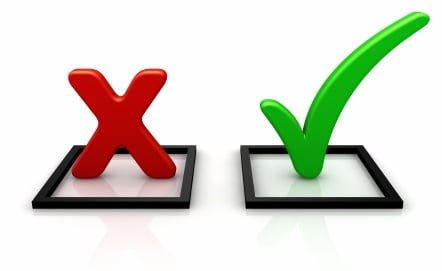by Ron
Share
by Ron
Share
By Ron S. LaVine, MBA, President and Founder of Accelerated Sales Training >
Late in 1994, just before the holidays, after five years of service as the Director of Sales Research at a Fortune 1000 company, I was “terminated.” Along with 250 other employees, I received a form letter explaining, “Inevitably, when two large organizations combine, certain areas become redundant or no longer justifiable.” Although “sales research” had found millions and millions of dollars for this company, they considered my staff position “redundant or no longer justifiable.”
Little did any of us know then, but over the next three years, six of the eleven divisions of my former employer would contract with my new company, Intellworks (Now called Accelerate Your Sales Results), to find money or conduct “sales research.” This meant that AYSR was hired to go through and clean up customer databases (addresses and contacts), and uncover hidden sales or business opportunities, a new twist on market research. To begin our examination of “sales research,” let us differentiate the client as someone who hires us as opposed to the prospect or customer who does business with the client.
What is “Sales Research-“
What is “sales research” and how does it differ from marketing research- “Sales research” is geared towards finding certain data required for making additional sales to a company’s existing customers.
A “Sales Research” Specialist is someone who has the expertise to find, evaluate, analyze, organize and package suspect, prospect and customer data into useful intelligence a sales force can act on — immediately. “Sales research” enables salespeople to do what they do best, which is selling, instead of spending their time trying to find who is looking to buy.
The process of “sales research” can also have other benefits over and above generating sales — such as reducing costs. For example, the identification of contact name and address changes reduces a company’s sales and marketing communications costs — by eliminating phone calls and mailings to contacts who are no longer employed or who have changed positions.
The real key to “sales research” however, is to ascertain the accuracy of existing data, gather some new data and then convert it into intelligence which a company (our client) can use to increase sales. For instance, this data might include when a prospect or customer plans to buy another (or related) product or service offered by the client. Another example is the identification of an upcoming significant change in a prospect or customer’s business, creating a need for additional products or services.
Prospecting for Gold
By now some of you are saying to yourselves, this sounds a lot like prospecting. “Sales research” is a lot like prospecting, but it takes prospecting to a new level by finding specific data and converting it into actionable intelligence. By using a series of telephone interviews, “sales researchers” are able to unearth a wealth of valuable data about prospects and customers. Here’s an analogy: “sales research” can be likened to a prospector who finds the gold for the client’s gold miners (salespeople) to mine.
Other opportunities for consideration by a “sales researcher” include customer needs for additional products, services, training, education or documentation. “Sales research” examines where an individual prospect or customer is now, where they want to be, and how they plan to get there.
Marketing “Sales Research” Services Can Be Tricky
First, to become a “sales researcher,” one must enjoy working on the telephone. Second, one must be able to market oneself in such a way that potential clients believe you can produce results. Finally, one must be able to produce some actionable results.
“Sales research” (research done for a specific sale) is a departure from the marketing research model. It requires educating (and convincing) potential clients about the benefits of having a research specialist go through their proprietary prospect or customer database to find hidden business opportunities their sales employees may have overlooked. Credibility and confidentiality are essential prerequisites for this type of work and signing a non-disclosure agreement is standard procedure before starting any project.
After negotiating the terms and conditions for a “Sales Research Services Agreement,” a custom questionnaire is created for each client based upon their specific business requirements. The AYSR places a four-figure value upon this service and usually offers it free in return for the client’s agreement to a pilot project. Based on past experience, once a client tries AYSR’s service, they will soon wonder how they ever got along without it.
The Pilot Project
To get a foot in the door of a potential client, AYSR frequently offered a 30-day, No Results-No Fee-No Risk trial or pilot project. If the client cannot convert the intelligence that AYSR produced into sales within one year (the amount of time will vary with each client), than they owe AYSR nothing but our expenses. This procedure allows us to test the client’s ability: 1. To act upon the sales opportunities found, and 2. To gauge the client’s ability to pay for AYSR’s services.
The client receives a well-documented report containing new sales intelligence about a sample of their prospect or customer base. This report details the location of potential business opportunities.
During a pilot project, AYSR requests 10% to 15% (depending on the selling price of the product or service) of the total gross sales generated by the “sales research” intelligence work. Statistically, our experience has shown hidden business opportunities exist within 10% to 30% of a client’s existing customer base. Therefore, in a company generating $100 million in gross sales, we expect to find between $10 to $30 million in additional potential sales and business opportunities. When Accelerate Your Sales Results completes ten “Account Sales Profiles” or customer record update surveys, we expect to find one to three legitimate business opportunities. In the meantime, the client receives the value-added service of having their database cleaned and updated.
When selling Accelerate Your Sales Results’ services, we quickly point out that salespeople usually receive a higher commission on news sales, rather than on sales to existing customers. Yet it is a well-known fact that the cost of acquiring a new customer can be up to 20 times more than reactivating an existing customer. So why do companies seek new customers- Maybe it’s because companies prefer to try to increase market share and so place all (or most) of their sales and marketing emphasis on attracting new business rather than making new sales to existing customers.
Again, our experience is clients often have hundreds of existing customers that rarely receive a phone call to see how they are doing. Calls to see if additional company products or services are in need may also be non-existent. These hidden business opportunities have amounted to millions of dollars in additional sales for the IntellWorks’ clients.
For some enlightened companies, the customer service trend is changing. Tom Trainer, VP of Information Technology and Chief Information Officer for Eli Lilly and Company, wrote: “Getting closer to customers is priority for many companies today. They recognize that close contact is vital to not only keep customers happy in the short term, but to get feedback that keeps future products, services and strategy ahead of the competition and in tune with customer needs.” [Tom Trainer, VP of IT and CIO for Eli Lilly and Co., Listening to Your Customers, INFORMATIONWEEK]
Telemarketing Professionals Are Well-Suited for “Sales Research”
With the right training and experience, an expert “sales researcher” can earn into the six figures by charging anywhere from $25 to $100 for each survey completed plus a percentage of the sales opportunities generated. Good “sales research” professionals who have developed excellent questioning and listening skills, the ability to learn about a client’s products and services quickly, and the ability to collect useful sales intelligence about the client’s prospects and customers, are the best people to assist the client with hidden opportunity identification.
David R. Bender, Executive Director of the Special Libraries Association, sums it up well: “…how many people have the expertise to evaluate, analyze, organize and package raw data and transforming it into meaningful information that can be put to work-” He goes on to say “…not many, and the explanation is quite simple.” As management expert Peter Drucker wrote in a column for the Wall Street Journal, “There is a big difference between being computer literate and information literate.” Bender writes, “Drucker explained that for data to become useful information, it must be organized for a task or applied to a decision.” He contended, however, “Few people are adept at determining exactly what information they need to do their jobs, when they need the information, and where they can get it.” [David R. Bender, The Information Highway: Will Librarians Be Left by the side of the Road- COMPETITIVE INTELLIGENCE REVIEW, Volume 6(2), John Wiley & Sons, Inc.]
A good “sales research” professional knows what data is needed, where it can be found and how to get it and provide it in a manner that can enable clients to increase their sales. In my case, the Accelerate Your Sales Results has generated over $21 million dollars for its clients over the past eight years, so I guess you could say downsizing has been a real blessing in disguise.
STAY IN THE LOOP
Subscribe to our free newsletter.
By Ron S. LaVine, MBA, President and Founder of Accelerated Sales Training > DO match […]
By Ron S. LaVine, MBA, President and Founder of Accelerated Sales Training > 1. If […]
By Ron S. LaVine, MBA, President and Founder of Accelerated Sales Training > I had […]
By Ron S. LaVine, MBA, President and Founder of Accelerated Sales Training Have you ever […]




